
![]()
Every Sunday, we bring together a collection of easy-reading articles from analytical to how-to to photo features in no particular order that did not make our regular daily coverage. Enjoy!
L.A. Times Photographer Shares an Olympic Journey: Robert Gauthier – LA Times

Robert Gauthier has been with the Los Angeles Times since 1994. Besides the Tokyo Olympics, he has covered the Olympics in Athens, Greece; Beijing, China; London, England; Rio de Janeiro, Brazil, as well as the Winter Olympics in Vancouver, Canada.
“Simone Biles (above) embraced by her coach, Cecile Landi, after an intense week of fear, disappointment, and scrutiny is my favorite image of the Games,” writes Gauthier in the LA Times. “Given the backstory, it’s equal to 1,000 words and yet still an intimate moment.”
Gauthier has covered international and national stories, including Middle East conflicts in Iraq and Lebanon and catastrophes such as the Sept. 11 attack in New York and Hurricane Katrina in New Orleans. He was the photographer for a story detailing the failings of a Los Angeles public hospital; the project won the 2005 Pulitzer Prize for public service.
5-minute Sunday Interview
Phil Mistry: What is the biggest challenge of photographing the Olympics?
Robert Gauthier: The biggest challenge is stamina. By virtue of the quarantine and dependence on Olympics shuttle busses, I had to add two hours of time to get to a venue and return to my hotel room. So, I believe I often experienced 16-hour days. Up at 5 am, lights out at 1 am the next day. Staying sharp during a 9 pm baseball game was a real challenge.
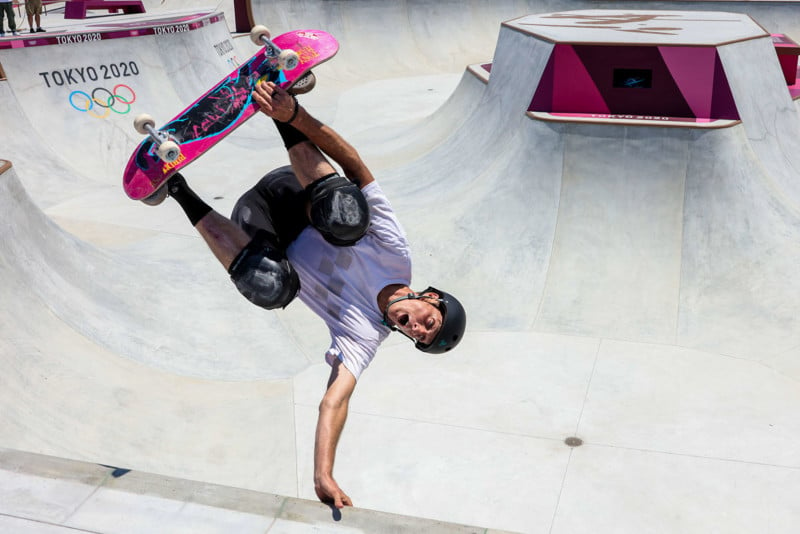
PM: Which was your go-to lens most of the time?
RG: I would’ve preferred to have my Canon RF 70-200mm f/2.8 L IS be my go-to lens, but we were often placed a good distance from the field of play, or the sport was spread out over a large field, so for the most part, it was the Canon EF 200-400mm f/4L. It has a built-in teleconverter and has performed beautifully over the years.
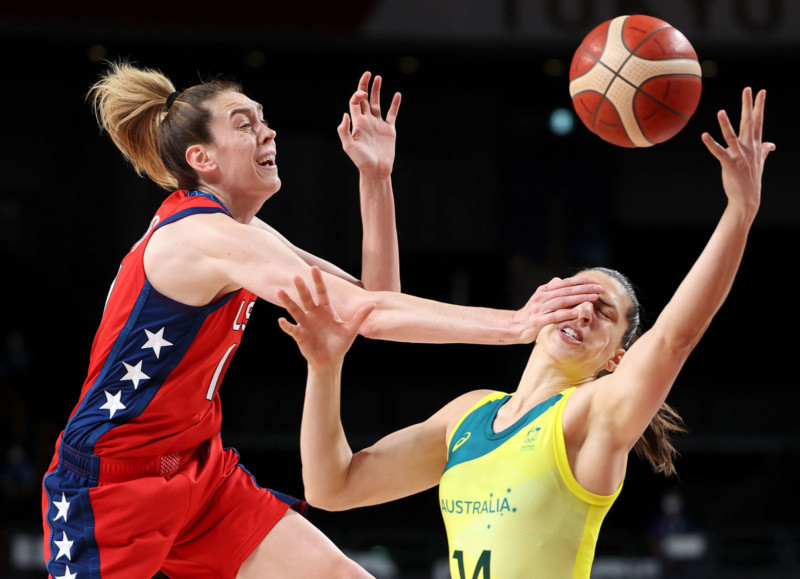
PM: What is your gear list?
RG: I used two Canon R5 and a Canon EOS-1DX Mk II. I brought along an array of RF and EF lenses – ranging from a Canon RF 15-35mm f/2.8 zoom to a 600mm f/4. Also, a set of super clamps and Pocket Wizard radio remote triggers for remote shooting.

PM: How do you make sure that if something important happens, like a fall, you don’t miss it?
RG: Sometimes, it’s just pure luck. But, most often, I try to have a good understanding of a sport before the event begins and place myself accordingly to catch the best action.

PM: Is it better to get the single perfect action or just to go motor drive and then pick the most favorable one?
RG: These days, most photogs are shooting at 20-30 fps. They are not only motoring through action, but they are also getting to choose the very best, peak moment because of it. Something like catching a gymnast at the very peak of a split jump, showing perfect form, which used to be a supreme challenge. Not as hard as it used to be, with the mirrorless cameras.
PM: Which is more satisfying, to get an average shot of a famous athlete or an outstanding one of an unknown athlete?
RG: It is way more satisfying to get a killer shot of anyone. If the image rises to the level of outstanding, it’s outstanding whether it has a famous person in it or not.
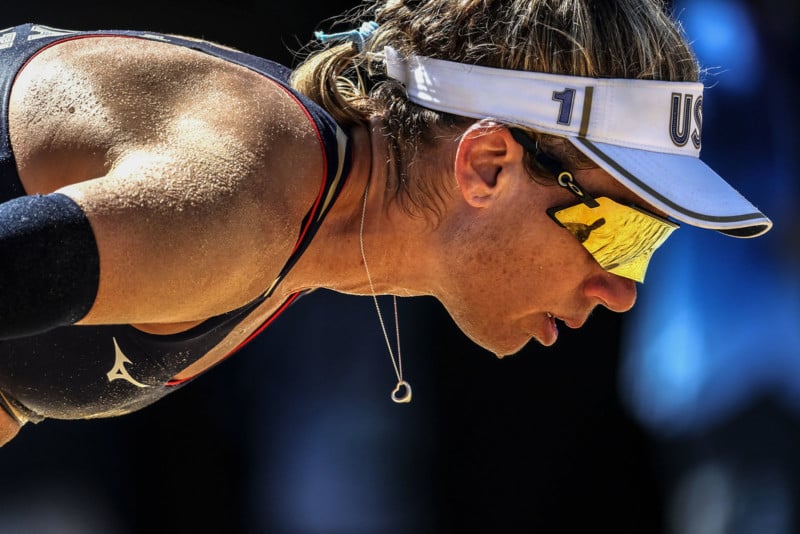
PM: You have been with the LA Times since 1994. Which single photo has been the most satisfying (not necessarily from the Olympics)?
RG: It’s very difficult to choose my most “satisfying” image. I guess it would be a shot I took of Michael Phelps from the Beijing Olympics when he won his seventh of eight gold medals by a hair. The image depicts him splashing and yelling at the site of his time. I will never forget the amazing energy in the arena and the split-second luck in the framing of the image. It’s tactile, for me. When I see that picture, I remember smells, sound, emotions – all that.
Regrouping After Pandemic Shut Down its New Home, International Center of Photography in New York Names its Next Director – The Art Newspaper
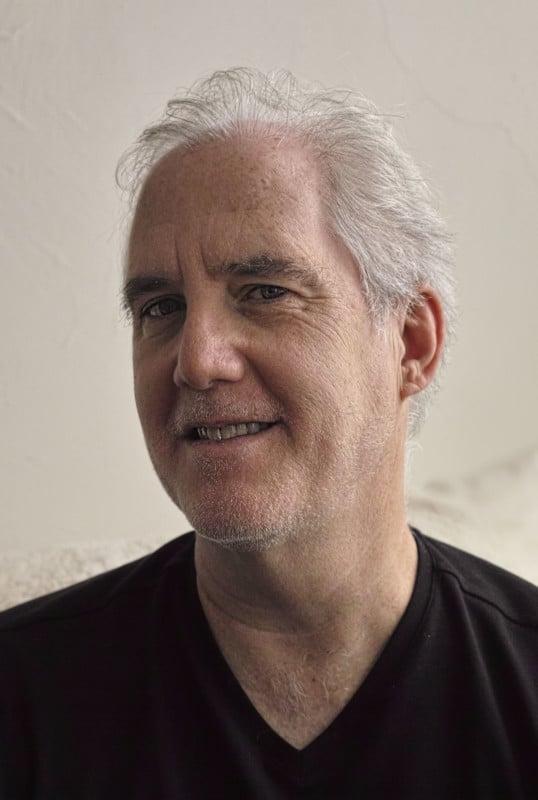
The International Center of Photography (ICP) in New York has appointed a new executive director: David E. Little, 58, who has served for six years as director and chief curator of the Mead Art Museum at Amherst College in Massachusetts. He succeeds Mark Lubell, who has led ICP since 2013.
“One of the wonderful things about ICP is that it has this rich tradition of doing exhibitions that are very much about what is happening today,” Little tells The Art Newspaper. “What we will always be thinking about is, how are we helping to understand and define ‘concerned photography’ as it shifts and changes during our time and moving forward?”

In January 2020, ICP reunited its exhibition spaces and its school for the first time in 20 years in a new $60m building on Manhattan’s Lower East Side, its fourth home to date.
How To Become a Better Bird Photographer: Advice from Audubon Photo Award Winners – Audubon
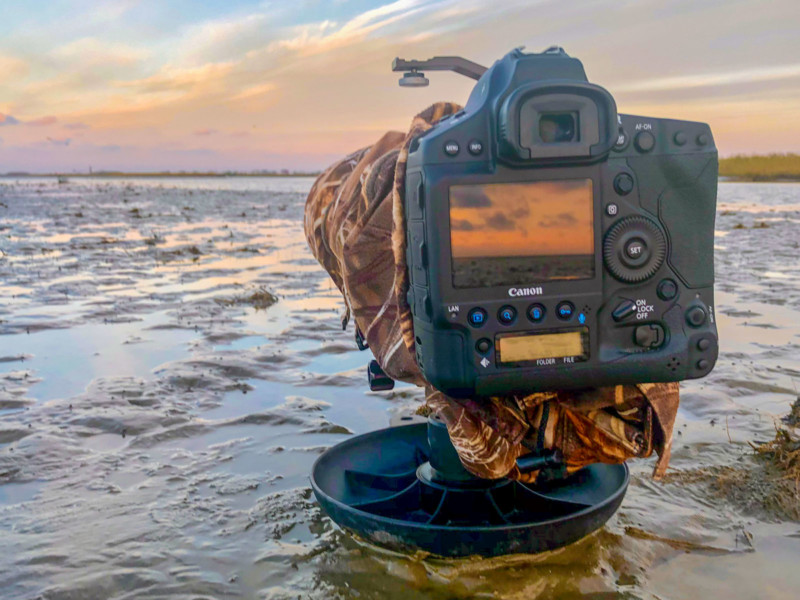
Audubon Photography Awards decided to ask former winners for their secrets and techniques behind winning images. They sent out a survey to more than 70 photographers, alumni of Audubon photo contests held since 2009.
Carolina Fraser’ advice:
- Study photos and paintings that you like. Why do you like them? What makes it a strong composition?
- Watch the background. Move around, keeping your eye in the viewfinder until the background frames the bird.
- Make sure that the different layers of the image (background, foreground, subject) don’t overlap and that the corners frame the image.
- My main rule is that there are no rules.
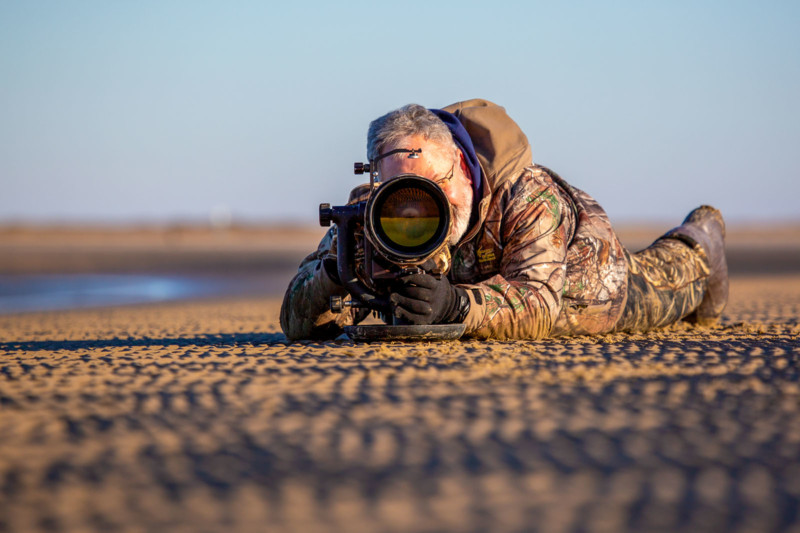
Tim Timmis (above) uses a LensCoat Skimmer Ground Pod II to get low-level, eye-to-eye shots. “Birds don’t recognize you as a person when lying down, and they will walk right up to you,” he tells Audubon.
Check out the link above for more tips and advice from other award winners.
Robert Capa, Founder of Magnum, has Earliest Known Prints Showing at Photo London – The Art Newspaper
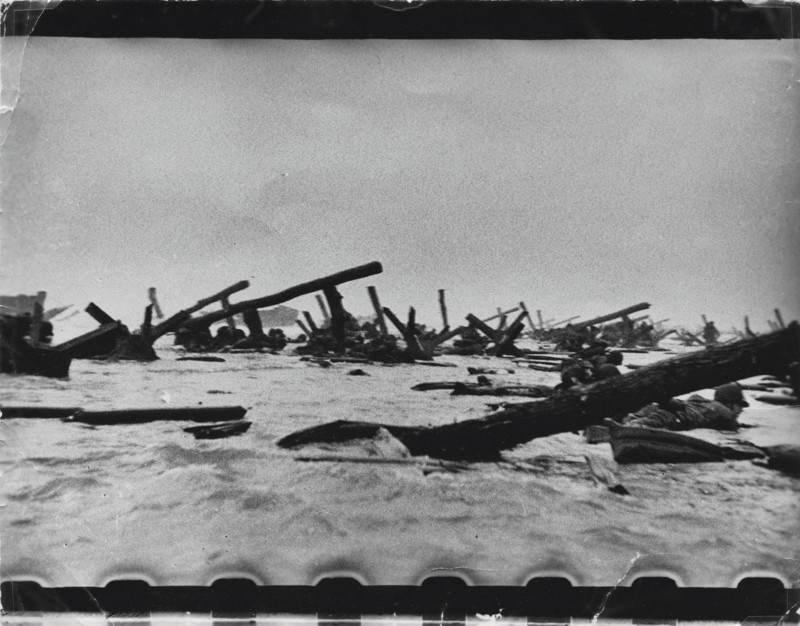
Rarely seen vintage prints by Robert Capa, the legendary and often mythologized war photographer and founder of Magnum Photos, are to form the centerpiece of this year’s Photo London from 9-12 September, which The Guardian describes as “The UK Photography event of the year.”
The exhibition is Robert Capa: Close Enough, organized in collaboration with Messums London and the Kogan Collection.
Robert Capa (1913 – 1954) was born Endre Ernő Friedmann in Budapest. He moved to Berlin when he was 18 and worked as a darkroom assistant. With the rise of Fascism in Germany, he went to Paris and later to New York to work as a photojournalist. He changed his name to “Robert Capa” because he thought it would be easily recognizable – and it sounded American. Capa died at 40 years old and covered five different wars during his short lifetime: the Spanish Civil War, the Sino-Japanese War, the Second World War, the 1948 Arab-Israeli War, and the first Indochina War.
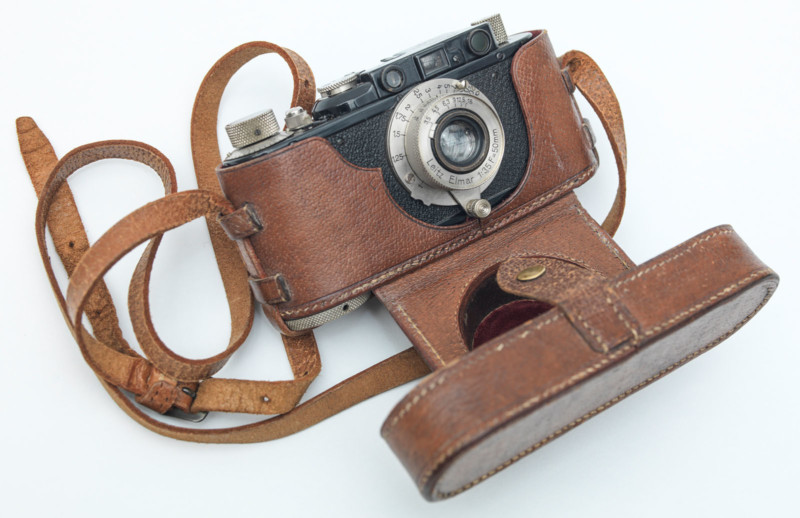
The central piece in this exhibition is Capa’s original Leica camera which took his earliest photographs and is being exhibited for the first time.
Close Enough will feature 50 vintage photographs, including Leon Trotsky’s first published photo of his address to students in Copenhagen on the Russian Revolution. It will also feature the second earliest print in existence of The Falling Soldier, an image of the first battlefield death in action.
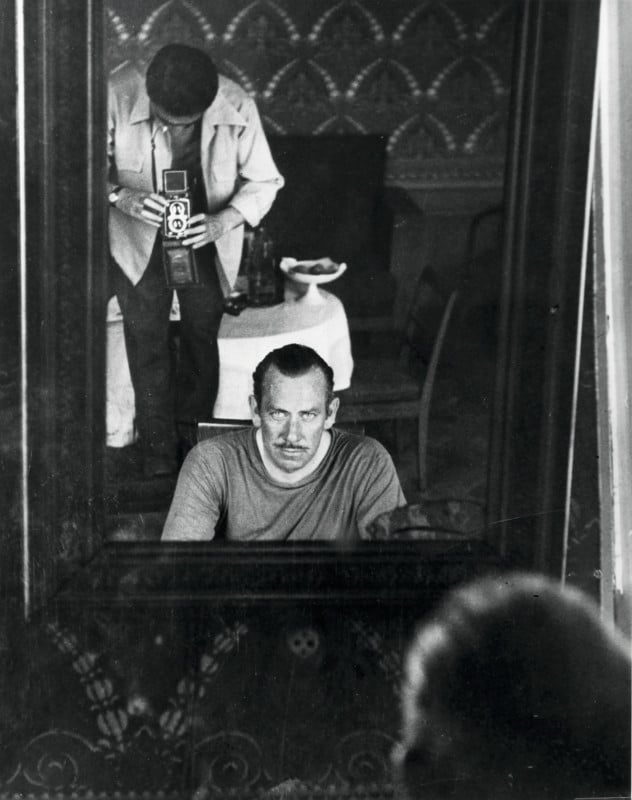
“There’s a lot of mythology about Capa,” David Kogan, former Magnum Photos CEO, tells The Art Newspaper. “And separating Capa out from the myth can be quite difficult.”
Craig Federighi says Apple’s Child Safety Scanning of Photos Will Have ‘Multiple Levels of Auditability’ – The Verge
Craig Federighi, Apple’s senior vice president of software engineering, offered details on when the scanning system will notify an Apple moderator of potentially illegal content. Apple has said before that a single match wouldn’t trigger a red flag. Apple has declined to publicize the exact threshold, saying this could let abusers evade detection. But Federighi says in an interview with The Wall Street Journal it’s “on the order of 30 known child pornographic images.”
“While Apple’s new efforts have drawn praise from some, the company has also received criticism. An executive at Facebook Inc.’s WhatsApp messaging service and others, including Edward Snowden, have called Apple’s approach bad for privacy,” reports WSJ.
Read also:
Apple Will Scan Photos Stored on iPhone, iCloud for Child Abuse: Report
Apple Confirms it Will Scan iPhone Photo Libraries to Protect Children
A Slippery Slope? Apple Will Soon Snoop on Your Photos
WhatsApp’s Head Calls Apple’s Child Safety Update’ Surveillance’
Apple Shares How its Photo-Scanning System Is Protected Against Abuse
Who Called the Paparazzi? – Rolling Stone
“Social media overhauled the celeb photography game,” says Caleb Church, a crisis publicist for high-profile entertainers to Rolling Stone. “Prior to Instagram, your weekly magazines were reliant on paparazzi to provide images for them to print, and fans were reliant on magazines to see celebrities. Now, celebs can just post on Instagram in real-time, and the media will pick it up later that day.”
“You want to be a pop star? Make friends with street style photographers,” advises Church. “Celebrities still have to be talked about, and photographers are the ones that will get them in the headlines.”
The Women Photographers Series: Angela Weiss – AFP Correspondent
Madonna liked one of the photos that Weiss captured and wanted to use it to promote the tour.
“They sent me a super-long contract that I could not understand — I didn’t know anything about rights or things like that,” remembers Weiss. “She did indeed buy one of my photos to use, and I bought my first car with the money! I was 25 years old.”
Duane Michals Unlocks his Andy Warhol Archive – Blind
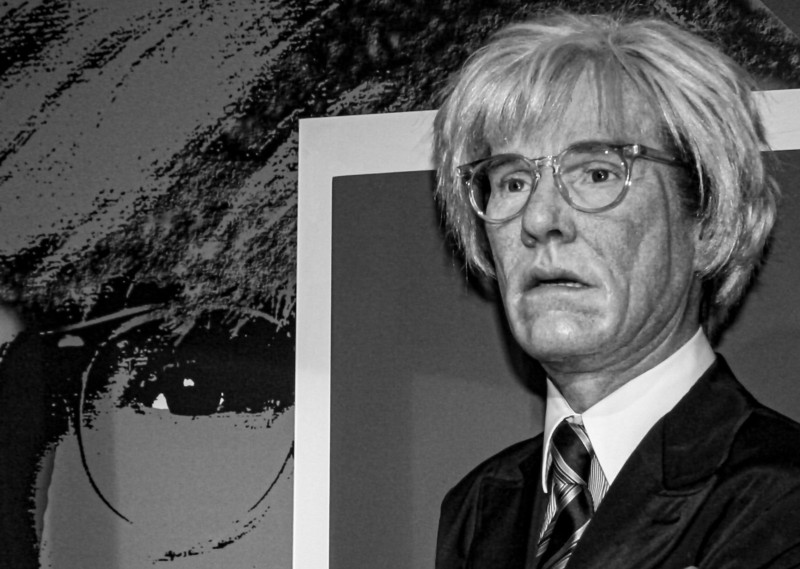
Duane Michals, who knew Andy Warhol since his days as an illustrator at iconic New York department store Bonwit Teller, has documented every inch of Warhol, even blowing up portraits into extreme close-ups to show each of his features.
He shows all this and more in his latest offering, Fabulous, a new digital booklet with photographs and collage of Warhol as well as stories from the times they spent together.
“Andy is the one to beat; he’s the one that all artists of that ilk want to be,” says Michals to Blind. “He’s transcended being a mere artist; he’s a phenomenon. Andy was phenomenal. And he still is, and he will get stronger as time goes on.”
How to Photograph the Moon on your Phone or Camera with the Best Settings – The Guardian
Behind The Shot: The Million Dollar Photo of a Cardinal in Flight – Alpha Universe
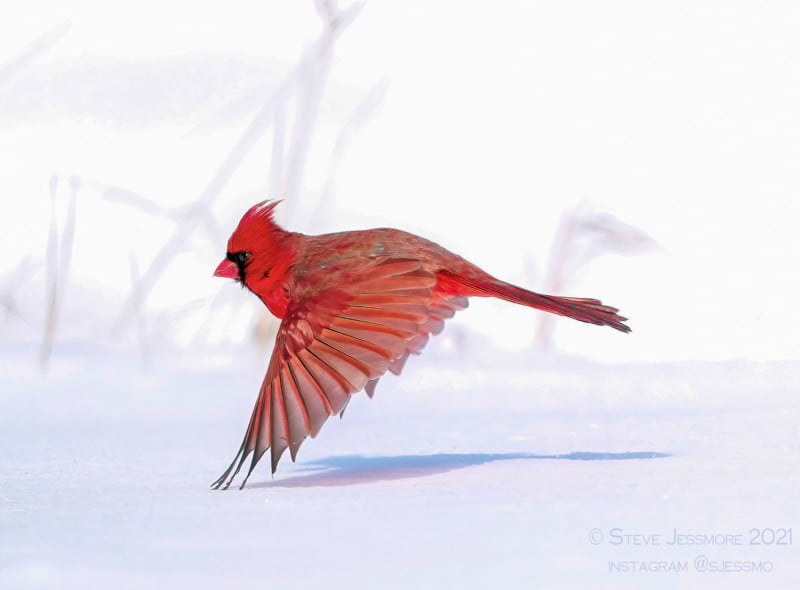
“I like to travel in my vehicle with my Sony a9 II and Sony 200-600mm f/5.6-6.3 G zoom near me in case I see wildlife that I can photograph,” Steve Jessmore, a 30-year photojournalist and five-time Michigan Photographer of the Year, tells Alpha Universe. “My love is to capture birds in flight and compose, so to say on the fly.
“I looked right through the passenger window and noticed the much smaller male northern cardinal. I was taken by the bright red against the pure white snow and the detail and saturation of the red as it was front-lit by the afternoon sun.
“I left the heat off, and the windows open so the car would cool down quickly. I’d had problems in the past with the warm air escaping the windows into the cool and giving me unsharp, heatwave effect images. For this shot, I shot two frames. This was the first shot as I reacted when he took flight from the weed. In the second frame, he was gone.”
Can You Stop People from Blinking in Photos? – Digital Photo

Every photographer has had these blinking photo-bombers in their pictures.
“I often resort to tricks to deal with the anxiety,” writes Steve Meltzer. “For instance, I say that I will take the photo on the count of three. Then I slowly count one…two… and shoot. Snapping the shutter before three tends to catch people with their eyes open.”
Spice up your Photo Art with Turmeric, Sunlight, and a 19th Century Photography Technique – Popular Science
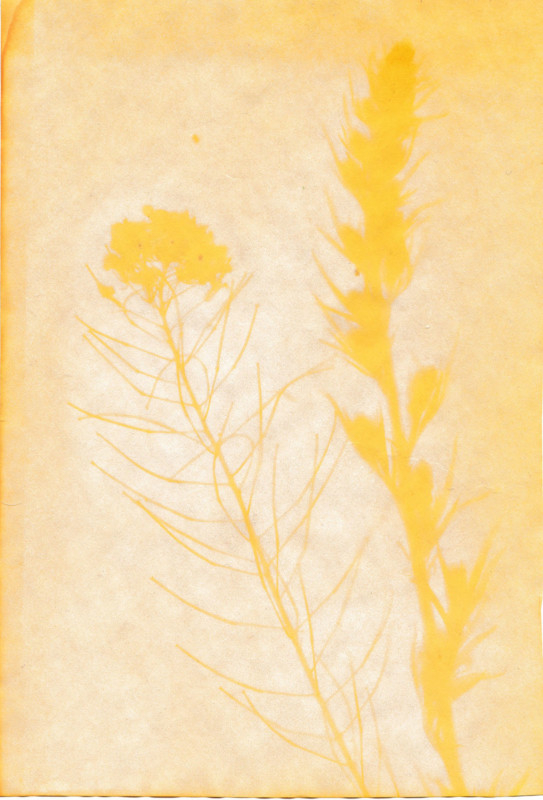
Turmeric is one of the most vibrantly colored spices you’ll ever find and a staple of Indian cuisine.
Curcumin, one of the main compounds in the plant, is also a photosensitizer, meaning it chemically reacts when exposed to light. You can use it to print images using a technique called anthotype, which was developed in the 19th century. It uses sun exposure to create pictures on porous surfaces like paper and cloth.
These Close-up Eye Portraits Belong to the World’s Most Famous — and Infamous – Faces — CNN
The photographer Platon has taken high-contrast close-ups of some of the most recognizable faces in the world.
But now, the British artist is stripping his portraits down, releasing a new collection of works that each feature only a single iris from the eyes of his subjects. Whom the iris belongs to will remain a secret, except to the buyers of the images.
Named for the dichotomy of his subjects, the series “Eye Love You, Eye Hate You” is being released on LGND.art, a platform for purchasing non-fungible token (NFT) artworks.
Why Do I Photograph Snakes? – Photography Life
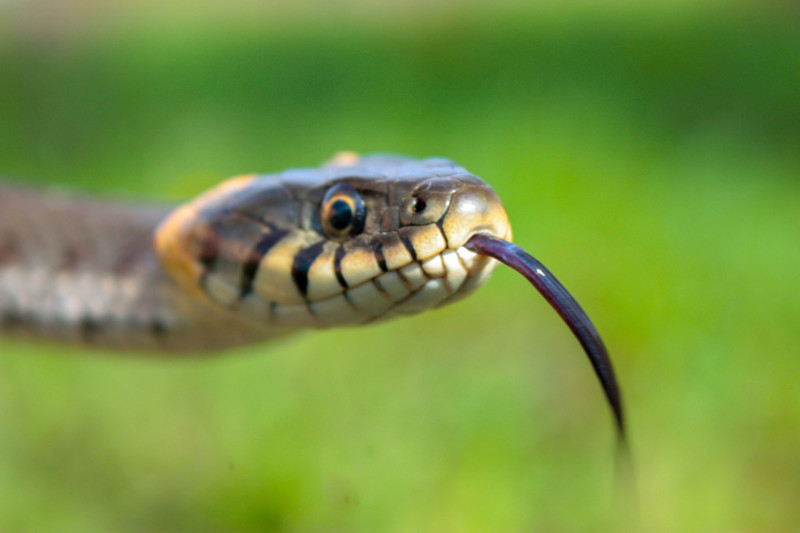
“As much as I like taking full-body and close-up snake shots, my favorite type of photo is the habitat shot,” writes Nicholas Hess. “This type of photo includes the snake in the foreground and a significant amount of habitat in the background.”
A Soldier Who Photographed World War II in Europe Describes 6 of his Photos that Reveal the ‘Insanity of War’ — Insider
When Tony Vaccaro hit Omaha Beach days after D-Day, along with his rifle, he also carried a compact camera — Argus C3 he’d purchased secondhand for $47.50 and had become fond of using as a high-school student in New York.
Last year the famed World War II photographer, whose professional career spanned almost 80 years and 500,000 images, caught and survived coronavirus at the ripe old age of 97-years-old.
Read also:
Tony Vaccaro Shares His Story and Images from D-Day and the Weeks that Followed
This Famous WWII Photographer Just Beat COVID-19 at 97 Years Old
In the 1930s, a Soviet Camera was the First Step Towards the SLR — BBC
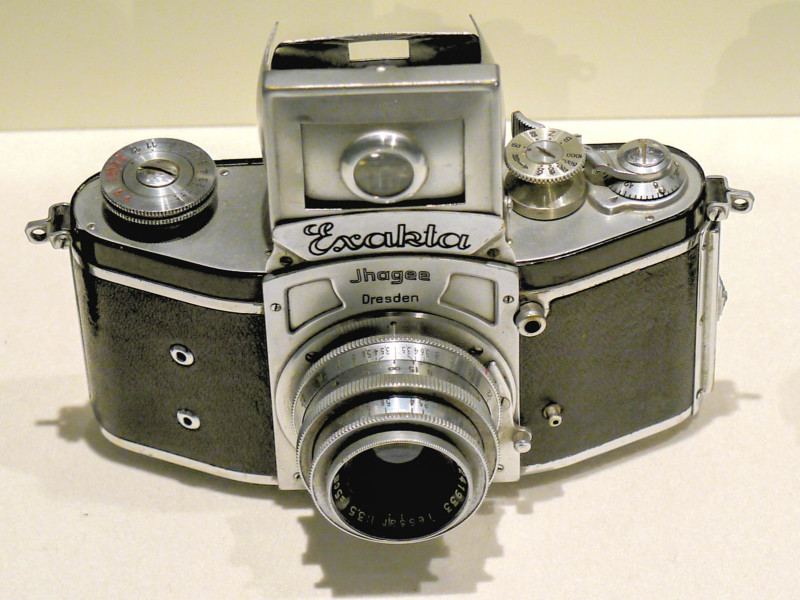
“In my opinion, the Sport[camera] was a revolutionary milestone in Soviet and world photographic industry, and a steppingstone to later 35mm SLR cameras,” Vladislav Kern, who runs the Soviet photographic history site USSRPhoto.com tells the BBC.
So why is it not lauded more today? The Sport became a footnote in photographic history, overtaken by the success of the Kine Exakta (above) – a camera so respected that it’s an Exakta James Stewart is using in the classic Hitchcock film Rear Window.
The Exakta was a “system camera,” which came with multiple lenses and various accessories.
Photo of the Week
Residents Evacuate Greek Island Hit by Wildfires
Quiz of the Week
1.) Camera sales in 2020 saw a 40% dip in market size, with Canon holding the top spot at 48% of total global sales. Who were the other 4 in the top five slots?
2.) Lens manufacturers in the past mostly used thoriated glass for the fastest, more expensive lenses, such as the f/1.2s and f/1.4s. Eventually, by the early 1980s, the thoriated glass fell out of use for consumer lenses – due to the factory workers’ health concerns and consumer radiophobia. This statement is: True or False?
3.) Which photo is considered one of the first and probably most famous paparazzi photograph? Hint: It was named by Time magazine one of “100 The Most Influential Images of All Time.”
Answers:
1.) Sony 22%
Nikon 14%
Fujifilm 6%
Panasonic 4%
2.) True. After the 1980s, newer formulations appeared, offering similar properties without the added risk of radioactivity.
3.) Windblown Jackie (Jacqueline [Jackie] Kennedy Onassis) photographed by Ron Galella in 1971.
Why I Like This Photo – Patrick Nowotny
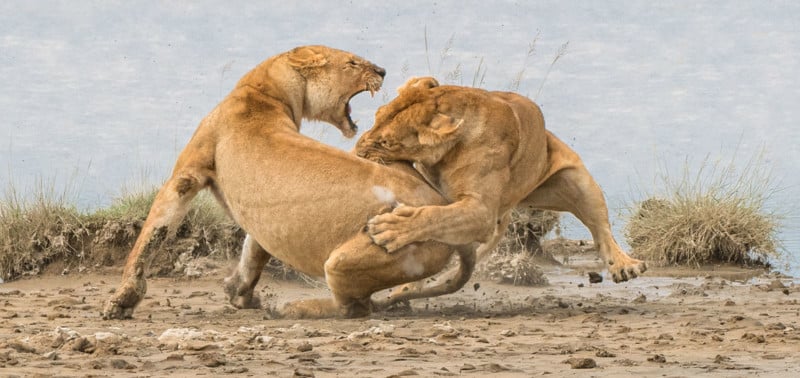
I like this photo because it captures the raw emotion of these lionesses in a struggle for survival in the Serengeti. Seeing in person something that I had only seen in videos makes this image even more special.
As this was a very bright sunny day, I knew that I did not want to use an ISO above 400. Seeing what was unfolding in front of me, I used a shutter speed of 1/2000 sec to freeze the action along with f/10.
I used a combination of a Nikon D500 and a Nikkor 200-500mm lens. I used the continuous high-speed option of the Nikon D500 set to 10fps to be able to capture this fast-moving drama.
This image was taken in the Serengeti during the migration period of 2019. Waterholes are very scarce during this time of year. A small pride of lions had claimed this waterhole when an interloper appeared. The alpha female of the pride attacked the interloper, followed by the other lionesses to drive her away.
As the battle became more intense, the action was fast and furious. The interloper cried out in pain as the alpha female bit and dug her claws into her. They spun around as if in a dance, with the alpha female losing her footing a bit as her leg became airborne. Utilizing the continuous high-speed capability of the D500 allowed me to capture the precise moment the interloper’s head was in profile as she turned to face her attacker.
I continue to read and watch photo articles from various photographers around the world to help me grow as a photographer. But nothing beats in the field learning from birds in flight to watching elephants; every encounter is a new experience.
Patrick Nowotny, who has always enjoyed photography, is based in Georgetown, Texas, where he enjoys retirement. Nowotny spends his summers in the mountains of Colorado when not traveling the world. In 2015 he bought a Nikon starter camera kit that launched him into the “digital” world of photography. Following a guided photography trip to Yellowstone National Park in 2015, his love of photographing wildlife and nature took off. Since then, trips to Costa Rica, Brazil, Chile, Africa, Australia, and the Great Bear Rainforest have fueled his passion. His latest notable accolade is winning Gold in the 2020 World Nature Photography Awards – Mammal Behavior Category for the above photo.
Quote of the Week – Robert Capa

If your pictures aren’t good enough, you’re not close enough. – Robert Capa
To see an archive of past issues of Great Reads in Photography, click here.
We welcome comments as well as suggestions. As we cannot possibly cover each and every source, if you see something interesting in your reading or local newspaper anywhere in the world, kindly forward the link to us here. ALL messages will be personally acknowledged.
About the author: Phil Mistry is a photographer and teacher based in Atlanta, GA. He started one of the first digital camera classes in New York City at The International Center of Photography in the 90s. He was the director and teacher for Sony/Popular Photography magazine’s Digital Days Workshops. You can reach him via email here.
Image credits: All photographs as credited and used with permission from the photographers or agencies. Header photo by Depositphoto.

